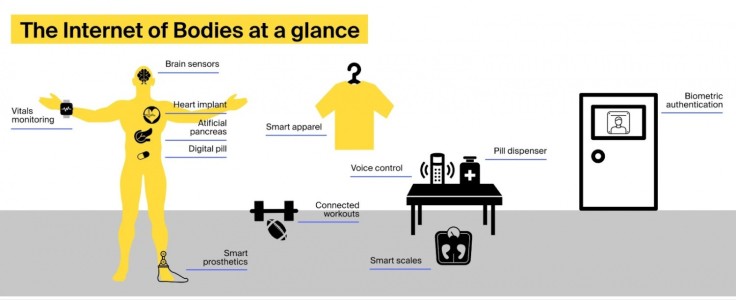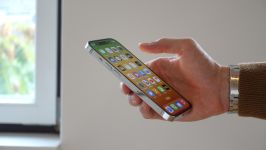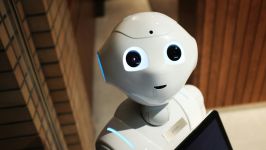
Following the pandemic and massive lockdowns, more people than ever realized the importance of pursuing a healthy lifestyle.
In 2021, the global fitness equipment market topped $11.3 billion (11% up from the previous year). At the same time, the number of gym goers who consider fitness club memberships key to achieving their health goals dropped to just 15.2%.
Experts attribute this shift in consumer behavior to the growing adoption of IoT in sports and fitness, influencing the landscape of sports app development. Let's see how connected devices transform the way we exercise, take care of workout equipment, and attend sports events.
Top 5 IoT Applications in Sports and Fitness
Before we dive into IoT usage in sports and fitness, it's important to understand what IoT is and why this technology, despite being around for two decades, has only recently started to gain its momentum in the fitness app development services landscape.
The Internet of Things, or IoT for short, is an ecosystem of consumer electronics devices and non-electronic objects that gather information using smart sensors and embedded software - i.e., firmware, middleware, and proper operating systems. The devices exchange data over a wired or, as the majority of fitness IoT products do, wireless network.
Most often, sensor readings will end up in the cloud. That's where data storage and processing operations take place. After that, a user interface - i.e., a web or a mobile fitness application, or even a voice assistant like Alexa - will display the analysis results, often encouraging you to take some action, like increasing your daily step count or doing more back exercises.

The Internet of Things fitness solutions exist in many forms, from wearable activity trackers to fitness mirrors coupled with sensor-equipped weights that monitor your posture during exercises and offer tips just like a personal fitness coach. IoT fitness devices that measure vital signs and come in direct contact with your body belong to the Internet of Bodies (IoB) realm.
Now we can finally zoom in on IoT applications in fitness and professional sports.
#1: IoT Boosts Athlete Performance
As we mentioned earlier, the Internet of Things fitness tracking devices feature sensors. Such sensors watch your vital signs, including body temperature, heart rate, and blood glucose and oxygen levels, as well as your movements and posture. By analyzing the sensor-scavenged data, fitness IoT solutions may suggest ways to improve your performance.
For example, Kristy Cheung, a professional fencer based in Hong Kong, revamped her workout sessions by wearing a sensor-stuffed bodysuit. The smart apparel assesses Ms. Cheung's balance and overall stamina, as well as her parries' strength, pinpointing areas for improvement. Similarly, an IoT fitness solution from HUMANoX gathers soccer players' performance data during training and tournaments and gives coaches hints about what can be improved.
#2. IoT Enables Virtual Group Workouts
The Internet of Things has given rise to at-home workouts - but it doesn't mean the owners of IoT fitness devices are destined to train in solitude!
Forward-thinking gyms can leverage the technology to conduct virtual group training sessions for amateur athletes exercising in the comfort of their homes. A professional coach, meanwhile, could monitor their vitals in real time and adjust their workout plans considering the users' physical condition and performance.
For instance, Peloton, a manufacturer of stationary bikes and treadmills, added live streaming functionality and leadership boards to their IoT fitness solutions. The fancy features help coaches facilitate indoor cycling classes while driving engagement among users.
#3. IoT Offers Immersive Training Opportunities
Virtual reality (VR) is a metaverse-enabling technology that, at the first glance, does not belong to the fitness IoT realm.
However, by using VR headsets in tandem with IoT exercise equipment like, well, the afore-mentioned Peloton bikes, users can train in simulated environments, such as world-class cycling events and marathons. As more brands jump on the metaverse bandwagon, we could soon see interactive sports events uniting athletes from all over the globe that will be taking place solely in virtual reality!
#4. IoT Improves Fan Experience During Sports Events
IoT fitness solutions can revolutionize not only workouts but also athlete and fan experience during major sports events.
California's Levi's Stadium has scattered over two thousand Bluetooth beacons across the facility. Communicating with a dedicated mobile app, these beacons help sports event attendees find their way around the stadium and order snacks and drinks.
Another example comes from the 2021 Tour de France event, whose organizers harnessed sensor data to create a digital replica of the entire racing event. The IoT fitness solution granted them an ability to monitor staff activities and racers' performance, which led to a better fan experience.
#5. IoT Keeps Exercise Equipment and Facilities in Perfect State
We've talked a lot about the user-side benefits of the fitness IoT transformation. But there's a reason why major health club chains tap into custom IoT consulting, too!
When installed on exercise equipment, smart sensors can reveal miscellaneous data about its usage. For instance, the Internet of Things fitness solutions can identify the most in-demand equipment or machines that might break down amidst workout sessions.
Additionally, IoT solutions could detect damage to the fitness facility infrastructure, such as piping, HVAC systems, and power grids, prompting businesses to intervene timely and minimize revenue losses.
The worldwide sports tech industry's value is on track to reach $17.6 billion by 2026. While it's mostly personal wearables that drive the sector's growth on the Internet of Things side, one thing is certain: IoT has found a permanent home in sports and fitness, and there's no going back.









